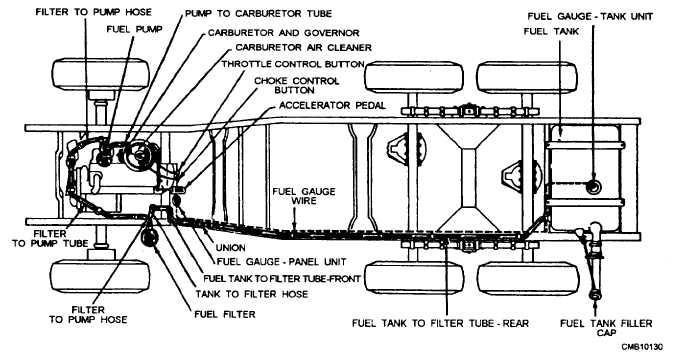Home > Construction Training Manuals > Construction Mechanic Basic > Gasoline Fuel System Components
DETONATION results when part of the unburned fuel mixture explodes violently. This is the most severe engine damaging type of abnormal combustion. Engine knock is a symptom of detonation because pressure rises so quickly that parts of the engine vibrate. Detonation sounds like a hammer hitting the side of the engine. It can crack cylinder heads, blow head gaskets, burn pistons, and shatter spark plugs.
PRE-IGNITION results when an overheated surface in the combustion chamber ignites the fuel mixture. Termed surface ignition, a hot spot (overheated bit or carbon, sharp edge, hot exhaust valve) causes the mixture to burn prematurely. A ping or mild knock is a light tapping noise that can be heard during pre-ignition. Pre-ignition is similar to detonation, but the action is reversed. Detonation begins after the start of normal combustion, and pre- ignition occurs before the start of normal combustion. Pre-ignition is common to modern vehicles. Some manufacturers say that some pre-ignition is normal when accelerating under a load.
DIESELING, also called after-running or run- on, is a problem when the engine keeps running after the key is turned off. A knocking, coughing, or fluttering noise may be heard, as the fuel ignites and the crankshaft spins. When dieseling, the engine ignites the fuel from heat and pressure, somewhat like a diesel engine. With the key off, the engine runs without voltage to the spark plugs. The most common causes of dieseling are high idle speed, carbon deposits in the combustion chambers, low octane fuel, overheated engine, or spark plugs with too high of a heat range.
SPARK KNOCK is another combustion problem caused by the spark plug firing too soon in relation to the position of the piston. The spark timing is advanced too far, causing combustion to slam into the upward moving piston. This causes maximum cylinder pressures to form before TDC, not after TDC as it should. Spark knock and pre-ignition both produce about the same symptoms - pinging under load. To find its cause, first check ignition timing. If ignition timing is correct, check other possible causes.
GASOLINE FUEL SYSTEM COMPONENTS
A gasoline fuel system (fig. 4-1) draws fuel from the tank and forces it into the fuel-metering device (carburetor, gasoline injectors), using either a mechanical (engine-driven) or electric fuel pump. The basic parts of a fuel supply system include the following:
FUEL TANK (stores gasoline)
FUEL PUMP (draws fuel from the tank and forces it to the fuel-metering device)
FUEL FILTERS (removes contaminants in the fuel)

Figure 4-1. - Typical fuel system for a gasoline engine.
Continue Reading